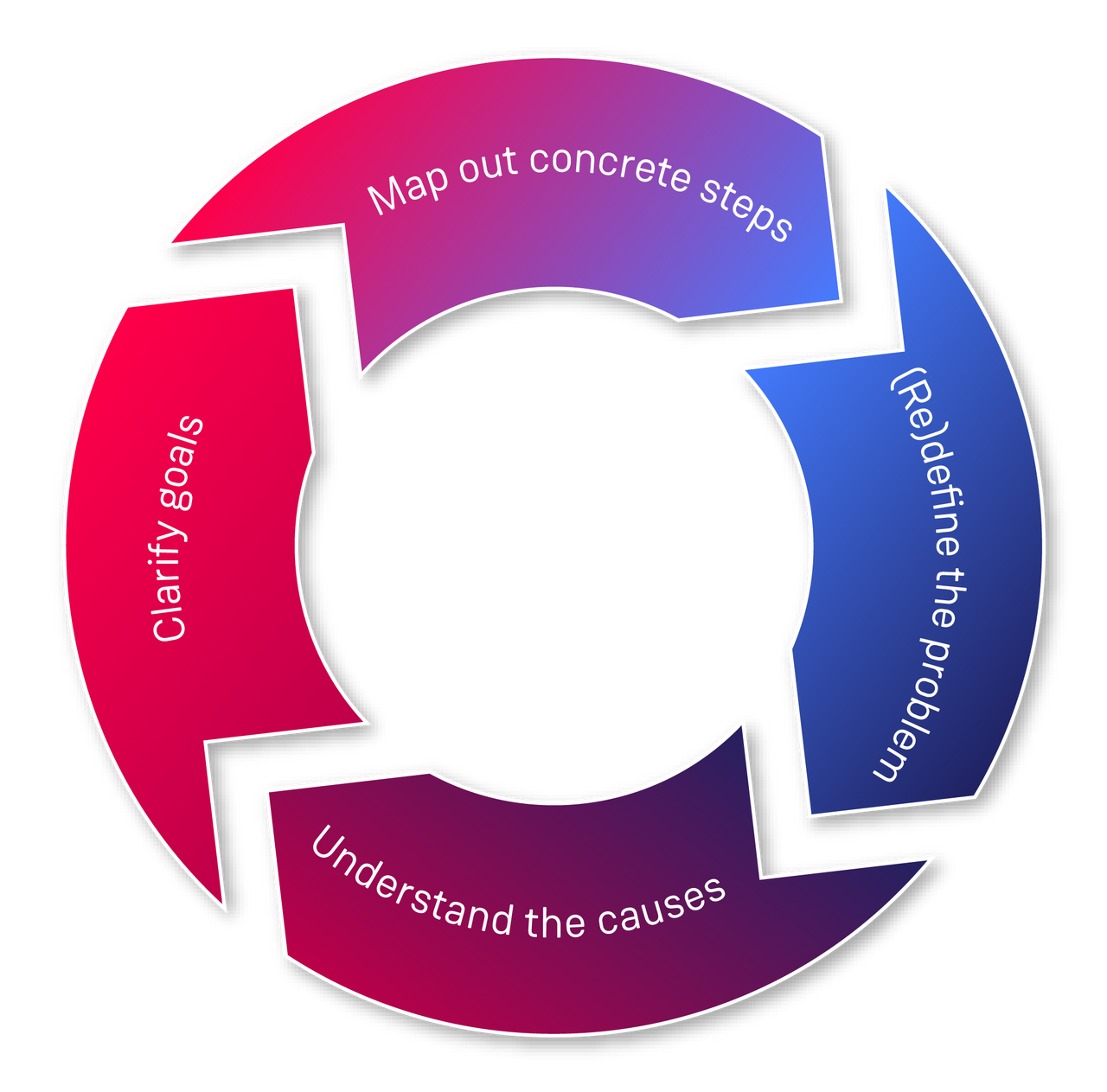Why You Need a Great Data Strategy—and How to Create One
Enterprises know they need to start looking at data strategies differently. Calling yourself a ‘data-driven’ company simply won’t cut it when you lack a clear, solid data strategy that proves you’ve thought through how you’re collecting, managing and utilising your data to serve your business and customers.
At Contino, we see a lot of data strategy documents that are effectively the puzzle pieces of a data strategy, but we don’t see a lot of true data strategies—never mind really good ones. If this sounds like your current approach, then read on for our guide to putting together a data strategy that really delivers.
In this blog we’ll take you through the steps you need to follow to move from churning out slides and vague PowerPoint presentations to constructing a meaningful and significant data strategy that’s capable of driving real value in your organisation. We’ll also share some examples of good and bad data strategies along the way.
Why do I need a data strategy?
Traditionally, enterprise data is something you get when you record transactions, keep a history of customer orders, or pass information from one application process to another. When your company starts moving from thinking of data at the transactional level to regarding it as a genuine asset from which you can derive new insights, that’s when your data will need its own strategy. The reason is that previous strategies for dealing with this data are usually database and storage focused, and not focused on the data’s consumer or the insights available through further analysis. As you emerge from transactional thinking, your data needs a strategy to enable the best possible capture and use, and to align to your business goals.
“Our strategy is to become a data-driven firm”
Sound familiar? We’ve heard this statement countless times and while it’s a really common data goal, it’s definitely not a strategy. Goals, or outcomes, might help you visualise what you want to achieve but they won’t give you the ‘how’, so let’s start with the key components of data strategy.
What is a strategy?
A strategy is made up of three pillars that effectively cover your what, why and how:
- What: the outcome you want to achieve
- Why: the problem you want to solve
- How: the concrete steps you think will take you there
Much has been written on the subject of strategy (see recommended reading below) so we’ll keep this brief with one short but important case study—Tesla.
In 2006, Elon Musk famously published his strategy for Tesla in a blog titled, The Secret Tesla Motors Master Plan (just between you and me). In 1,400 words, Musk lays out in plain language and digestible detail exactly what he wanted to achieve–with a clear how and why– as well as enough evidence and reasoning to convince his audience. The strategy for Tesla, which somewhat amusingly is his ‘on the side’ project, fulfils the three key strategy pillars.
Outcome
Elon Musk wanted to “help expedite the move from a mine-and-burn hydrocarbon economy towards a solar electric economy…. [by making].... an electric car without compromises”
Problem
Sustainability and affordability in the electric vehicle (EV) market. Musk wanted to “build a wide range of models, including affordably priced family cars”.
Concrete steps
Musk ends his blog on four clear bullet points:
- Build sports car
- Use that money to build an affordable car
- Use that money to build an even more affordable car
- While doing above, also provide zero emission electric power generation options
Who knows what goes on inside Musk’s mind, or why he chose to publish the blog at that time, but cynicism aside, if you want to promote the need to move away from fossil fuels and to help shareholders and potential customers understand the urgency of your strategy, then the more people you can bring on-side, the better.
This leads to another point, which is about pride and conviction. If people were to search your company’s strategy, would they be onboard with your outcome, problem and steps? Would they understand each pillar, and would your concrete steps make sense to them? And if not, why not?
Let’s take a look at a statement that lacks the key features of a good strategy. The following are edited bullet points from a current published strategy for a large UK company:
Our strategy
- Develop and grow our X and Y businesses
- Drive success by inspiring and building a diverse workforce
- Grow shareholder value sustainably and enhance financial performance
- Move our sustainability agenda forward
Each element of this strategy is really just an aim. There’s no problem to solve, no plan—however high-level—to get there, and the aims themselves are too vague to ever know when they’ve been achieved.
If you worked for Tesla in 2006, reading its strategy would have left you in no doubt about what you had to do when you got to the office the next day, and for the next 10+ years. This second company’s strategy though, leaves us with absolutely no clue what to do tomorrow or at any point in the future.
Let’s try to make one of these aims into a strategy. Take “Develop and grow our X and Y businesses”.
My assessment of the problem to solve here is that the company has a lot of expertise in certain technologies and processes, but is mainly a player in one industry, so is restricted in its future growth outlook.
The outcome the company wants to get to is to increase revenue.
And the high-level but concrete steps to get there could be, for example, to:
- increase investment in platform technology to allow easier movement between their core industry and expansion areas
- increase spend targets for marketing and sales on the three biggest consumers in industries X and Y
- partner with company Z to offer a showcase of what they can achieve
Putting this together we get something like:
- Our strategy is to grow the company by looking outside our market segment.
- We will do this by investing in a platform to underpin our world famous offering, which will make this offering transferable and relevant to other related industries.
- We will divert time, energy and money to building close partnerships in the X industry, which will establish our brand as a strong competitor early on.
This is just a start, but see how much clearer and focused this is now? Teams could take this high-level strategy and translate it into clear steps that are relevant to their specific functions.
Now we’ve discussed what we mean by a ‘strategy’...
What is a data strategy?
A data strategy is a strategy that’s focused on the problems you want to solve either with or using your data—often both. It will include data-related solutions too, and likely have a strong technology element, but it must always be about the business problems it’s trying to solve. A data strategy addresses how your company will handle data to progress its business aims. Naturally this will include how data is collected and stored, but the details around what kind of data the business goals demand is equally important.
The four steps to creating a great data strategy
1. Define your problem
Albert Einstein is often quoted (in all likelihood, erroneously!) as having said, “If I were given one hour to save the planet, I would spend 55 minutes defining the problem and one minute resolving it.”
Regardless of the quote’s origins, the principle is worth taking heed of.
Your problem is important to define as this will shape everything you plan and everything you put in action to solve it. Your problem statement will reflect the business value attached to solving it.
Staying with our strategy example, the goal, “Drive success by inspiring and building a diverse workforce,” doesn’t contain a problem statement, whereas, “A lack of diversity can unintentionally create a hostile environment and contribute to higher turnover; when employees feel like they don’t fit in, they’re not likely to stick around,” is much better as a problem to address.
When it comes to data, let’s compare the following:
A: “We want to have data that is high-quality, consistent and well-defined, with clear ownership and accountability for managing it. This will provide us with greater confidence and trust in our data and make us more effective at using it”
B: “We are not effective at using our existing customer data to make decisions on where to focus scarce resources, and instead we rely on one-off surveys which have a high cost and low granularity of insight as they sample only a small part of our customer base. This means we are leaving value behind and not targeting the best areas of development in the best ways.”
A presents a goal, while B presents an actual problem to be solved.
To understand the problem you’re facing takes time and effort. It’s easy to spot the symptoms—stagnating sales growth in this example—but much harder to identify the cause. It is only through finding likely causes that you can build a truly great strategy to address your overarching problem.
So how do you go about doing this? This is the hypothesis stage and it starts with getting opinions. Get people together in a room to discuss what they think are the underlying issues. Some should be experts, some should be good at asking the right questions. Between you, you’ll come up with areas to explore. Maybe this involves looking at the traditional levers in your supply chain of time (speed to deliver to customers), price, and quality.
Next, understand what you don’t know. For a data strategy this can be the key element. If, for example, it seems like new customers are being put off by the length of time it takes to sign up online, we need the data to prove it. If we’re looking at a theory on the inefficiency of our pricing engine, we need data to prove it. And if our problem is that we can’t do something, such as joining up a customer journey across the whole business, we need data to understand how significant that joining up could be to the bottom line. This part is really important: plenty of ideas such as joining up a customer journey sound sensible, but that doesn’t automatically make them your top priority. The contribution that executing that idea will make to the bottom line and the overall outcomes you’re looking for, is the deciding factor here.
Now think about how to measure your problem statement. Consider these statements for an insurance company:
A: “We don’t have a joined up view of our customers’ journeys through our portfolio of products and services”
B: “We can’t easily see which of our customers are buying multiple products and services from us, or easily predict which customers would benefit from and be likely to engage with targeted product suggestions”
In the second statement, we can start to see a more precise version of what the problem is, and we’re beginning to appreciate how we’ll know if we’ve solved the issue later.
2. Understand the causes of your problem
Understanding the causes of your problem, or even constructing a working hypothesis on the causes, allows you to develop potential solutions to target those causes. Without this understanding you can only guess at what might help improve things. The hypothesis element here is really useful to remember. If you had all the answers already, well things would be different, wouldn’t they? An educated guess is a good place to start as you can gather data and look to prove out pieces of your starting hypothesis. It gives you something to test against. You might not have it quite right, but that’s ok. In fact, you should expect it. Iterating on the problem, the potential underlying causes, and the data that helps you get closer to the answer is your best chance of really getting to grips with the issues.
To understand the causes of a problem, you need to carefully examine the situation and gather information about it. This may involve conducting research, collecting data, and speaking with people who are knowledgeable about the issue.
Once you have gathered information about the problem, you can use various analytical tools and techniques to identify the underlying causes. For example, you could use a cause and effect diagram, also known as a fishbone diagram, to visually organise the information and identify potential causes. You could also use a root cause analysis, which involves systematically working through the various potential causes to identify the most likely ones. Our favourite is the Five Whys technique, which will be familiar to anyone who’s spent time with young children eager to know the reason for absolutely everything. This helps you dig into the details of each layer of questioning, to get to the root of the problem you are trying to solve.
Compare:
A: “Our lack of detailed understanding of our customers means we cannot target customers with personalised advertising”
B: “We don’t know when a customer who already has pet insurance with us also gets a quote for car insurance, or details around the circumstances that prompt this product crossover, which means we cannot work on growing this relationship with targeted advertising or by making predictions on which customers are likely to require products across the business. Improving this will improve our sales within our existing customer base”
The first is unspecific, whereas the second is identifying a particular cause of a problem. Already we can read this second statement and begin to have an idea of what to do at work tomorrow to help solve this.
3. Work out where you want to get to
Thinking about what your desired end state is will help you shape the strategy to get there. At this point we understand our problem and we understand the likely causes. Step three is to work on realistic goals based on that knowledge. These aims must be proportional to the problem and causes, almost like they’re attached by invisible string.
This seems like the easiest point to achieve as it’s the one many companies tend to focus on. But guess what? It’s easy to get it wrong too; it’s really important to be clear and specific on this one, while staying in the realms of what you can control and what’s realistic. What do we mean by that? Well, ‘improved growth’ is not a specific goal. Nor is the goal from our strategy case study above:
“Grow shareholder value sustainably and enhance financial performance”
How about a few tweaks: ‘Grow shareholder value over the next five years, and enhance our financial performance when compared with our average over the last five years.’
It’s a bit better, but for a good example, look at one of the objectives from British Cycling’s four-year plan, published in June 2009:
- To get more people on the bike by rolling out a series of exciting mass participation cycling events with British Cycling's Principal Partner, British Sky Broadcasting, to encourage people of all cycling abilities and interests to get on the bike and share the cycling experience. Working with Sky, British Cycling will aim to get one million more people cycling once a month by 2013 through the recently launched 'Skyride' initiative (www.goskyride.com), contributing to the Sport England target to get 125,000 more people cycling once a week by the same year. A comprehensive programme of led rides and sportives will complement the 'Skyride' initiative to offer local participation opportunities across the UK.
This starts high-level but quickly gets specific on the numbers of people it wants to take up cycling over particular periods of time. It also includes some elements of how it intends to meet those aims, but more on that in the next section. It passes the very simple “how would you know if you’ve achieved your goal?” test, because the goal is specific—it’s just a case of adding up the numbers. Now, getting that data to prove it is another story.
Let’s go back to our insurance example and work on the goals.
A standard example would be, “growing our business with existing customers by joining up our customer journey, enabling us to predict uptake and target accordingly.”
But we can do better by being specific about the goals. This is much better: “taking our customer product average from 1.6 insurance products per customer to 2.2, moving from the current below-industry average to an above average rate.”
For anyone working on this, it sounds achievable, and they’ll know when they’ve reached their target, i.e. we’ve compared ourselves to the average and set a target not to double, or become “world-leading”, but to get on the right side of that average.
4. Identify the things that will get you there
We’re almost there, and most of the hard work has been done. The very last piece of the data strategy puzzle, before we put it all together, is working out how to get from your problem to your goal, using what you now know about the causes to inform your solutions. You need this part to be your guide to what to do first, and then what to do next.
These should be specific, but they don’t need to be particularly low-level. Think carefully about the activities and changes you need to make to head towards your goals, and remember to consider the things you won’t do or should stop doing too. These will take a form similar to “achieve X by doing Y.”
One company we worked with had the goal of becoming data-driven. The task was to find the actions that would help achieve that goal based on the intended results and, looking at its current situation, which was a general lack of data understanding, working on the causes. We identified that a primary cause of data blindness was that data from across the dozen or so systems of record the company operated—often split on geographical lines but sometimes overlapping within a market too—was not easy to surface. It was impossible to monitor live sales numbers going through those systems, and all but impossible to track customers present in multiple markets.
The solution—join up the data—was easy to express, but it wasn’t specific enough, so we laid out the following clear steps:
- enable scalable data extraction from backend systems by following an API-first approach to all new development
- get results to aid decision-making sooner by limiting the scope of cross-market data extraction to two core use cases—sales figures, customer tracking—and to get just the data that will allow these to be monitored across markets
- get real value from the backend data by extracting data from one backend system to answer an industry question—average prices of units sold in the UK, for example—and publishing the results as a paid-for data set to the industry
The aim of completing this section is to leave everyone working towards your strategy with a really clear view of what they will be doing tomorrow, next week, next month. Think back to the Tesla statement and compare with what you have produced. Is yours as clear as that? Is there anyone in your organisation who will be unsure of what to do next? If so, it’s a sign to go deeper and get more specific.
In Summary
The four steps to creating a great data strategy are:
- Define the problem
- Understand its potential causes
- Work out where you want to get to
- Identify the concrete steps that will get you there
Designing a data strategy should be an iterative process, and should be considered a hypothesis, because no one has all the answers straight away. It shouldn’t be exhaustive, but should leave its audience clear about what happens next. It is not a plan to centralise your data, nor is it a plan to govern your data, although these might feature in the solutions section.
A great data strategy is something that supports your business goals and presents a path to producing real value. It should be hard work to create but easy to understand, and above all, a great data strategy should be worth talking about, just as we have discussed the Tesla strategy.
Recommended Reading
Secret Tesla Motors Master Plan
Good Strategy / Bad Strategy by Richard Rumelt - the difference between good and bad strategies and why it’s important
https://aws.amazon.com/what-is/data-strategy/ - a technology-focused data strategy walkthrough
https://en.wikipedia.org/wiki/Ishikawa_diagram - the fishbone diagram for investigating causes of a problem
https://en.wikipedia.org/wiki/Five_whys - the Five Whys technique for drilling down into causes







